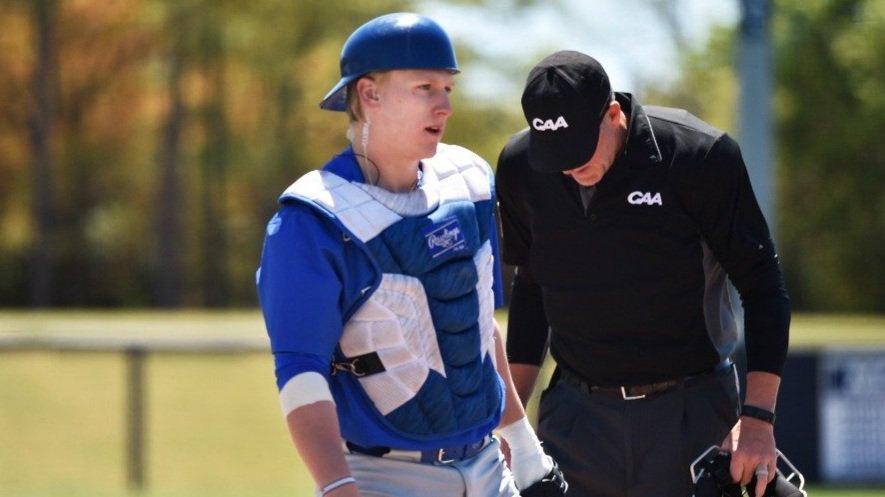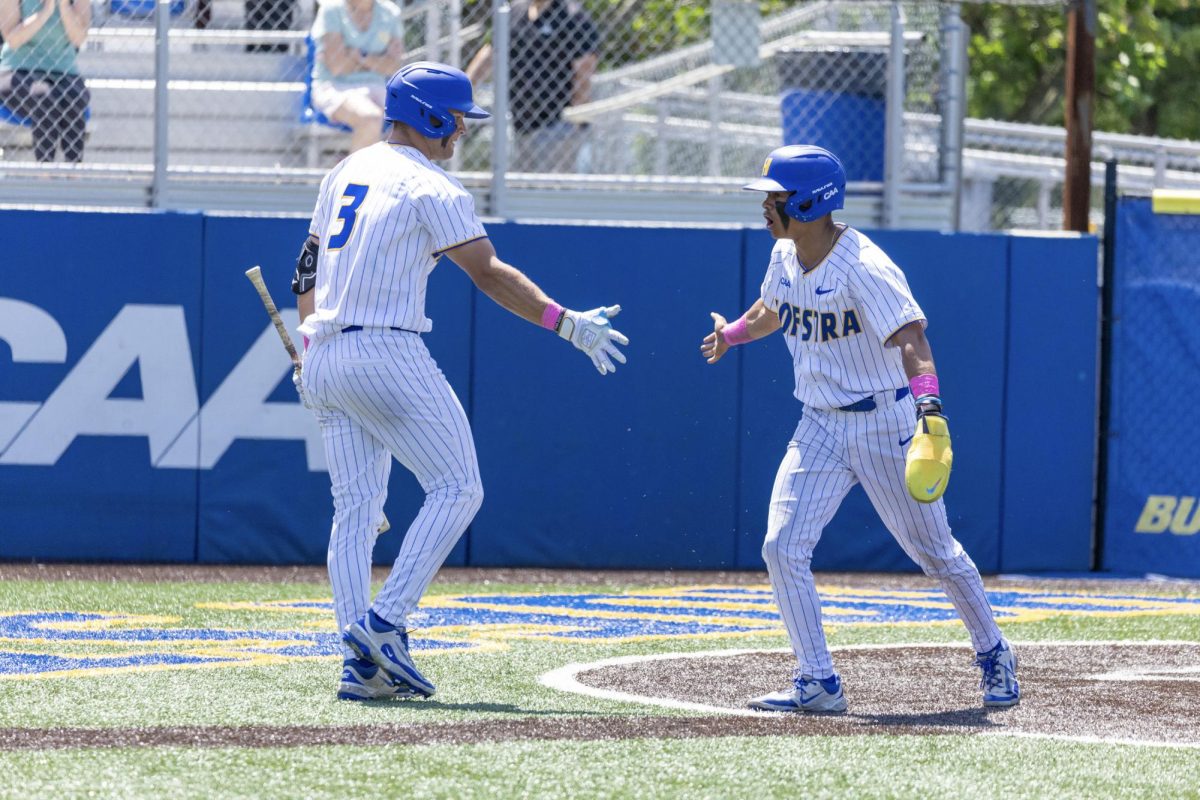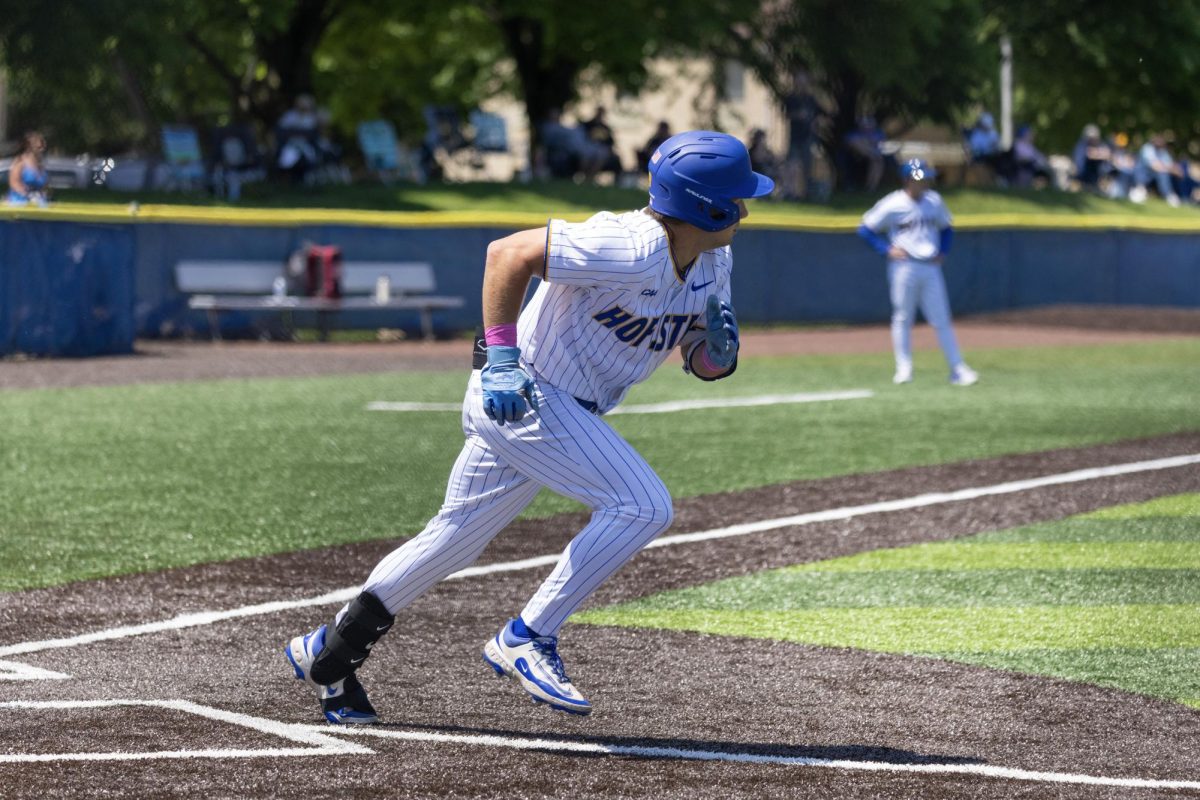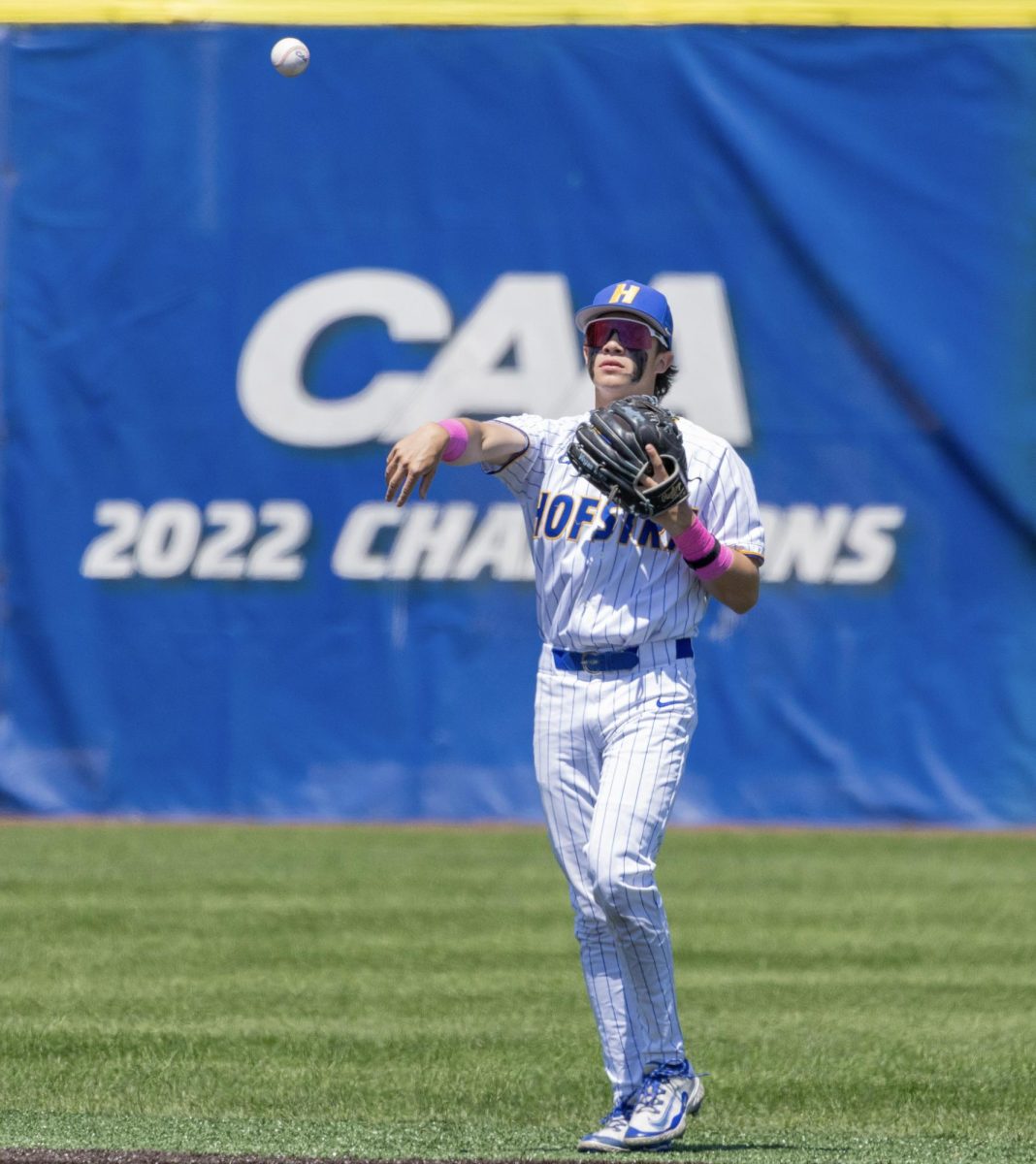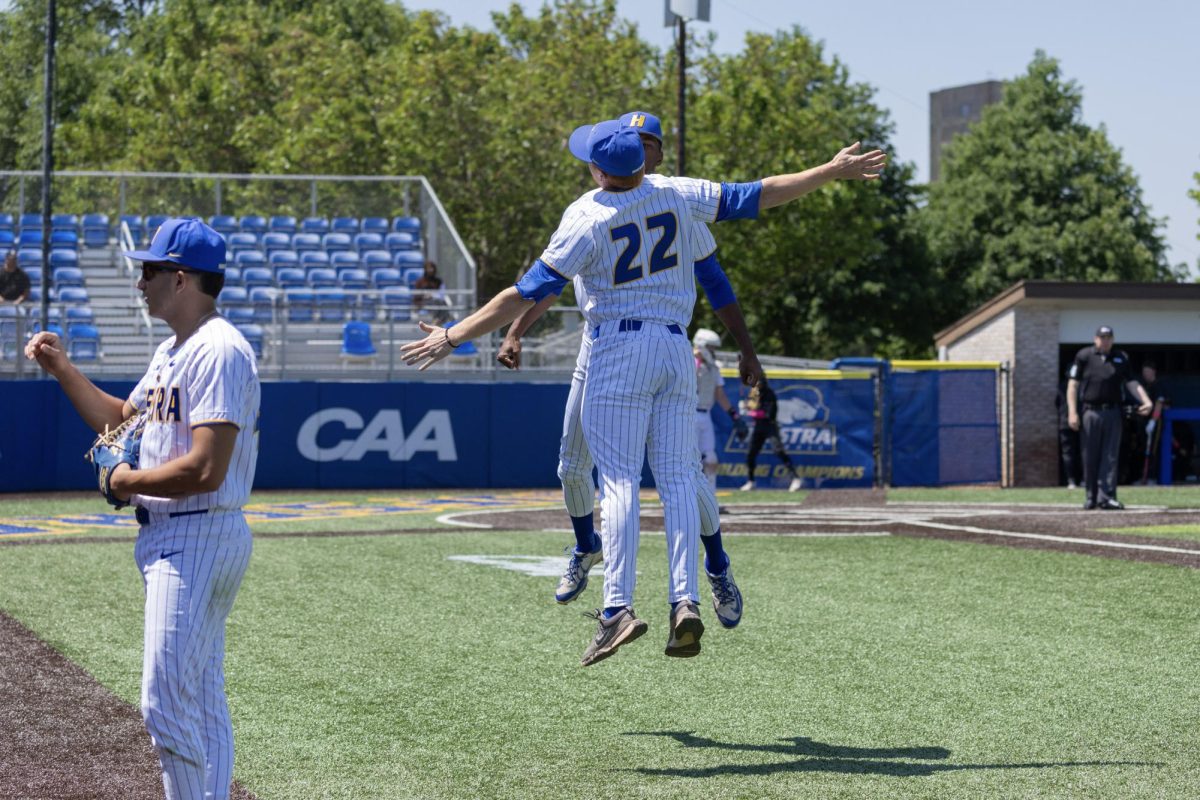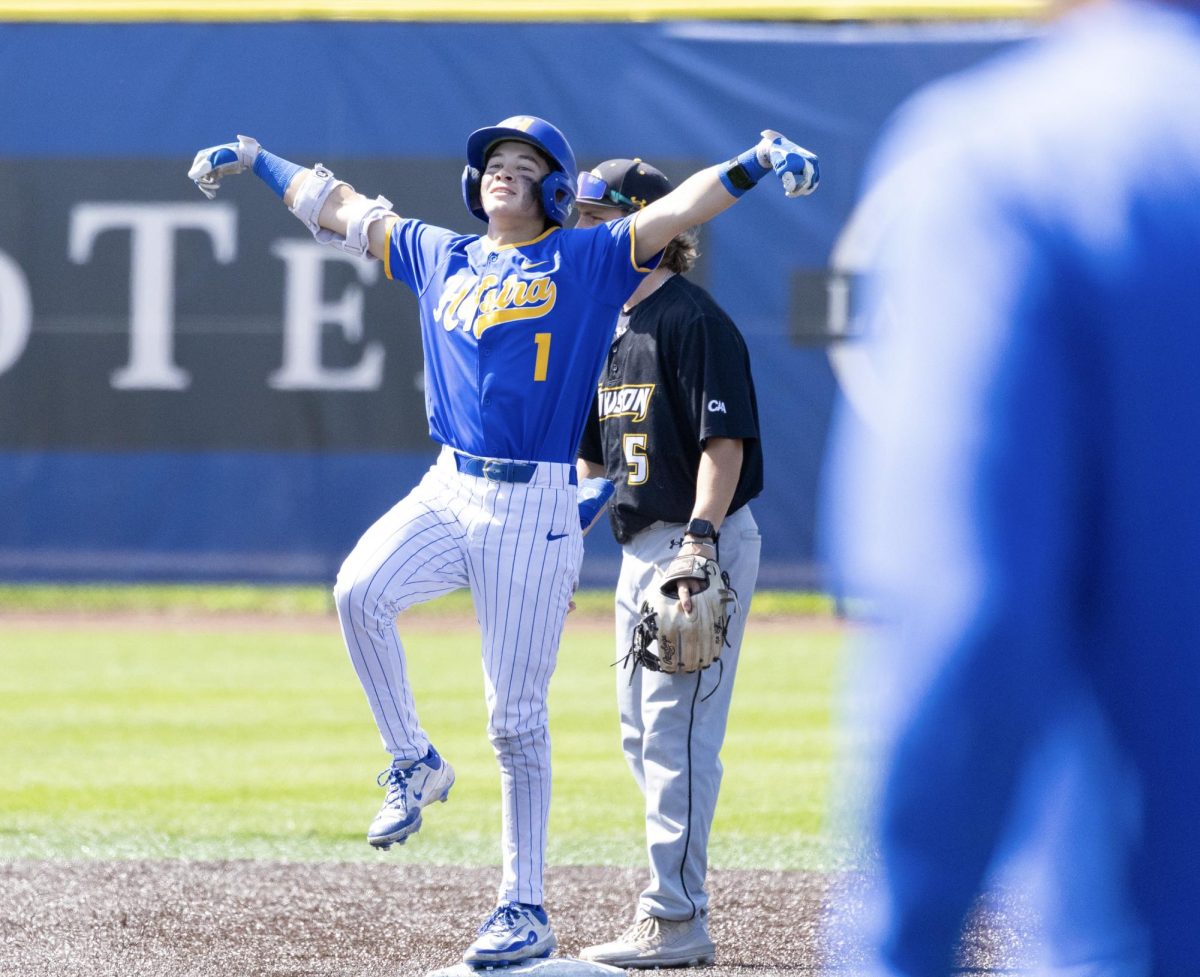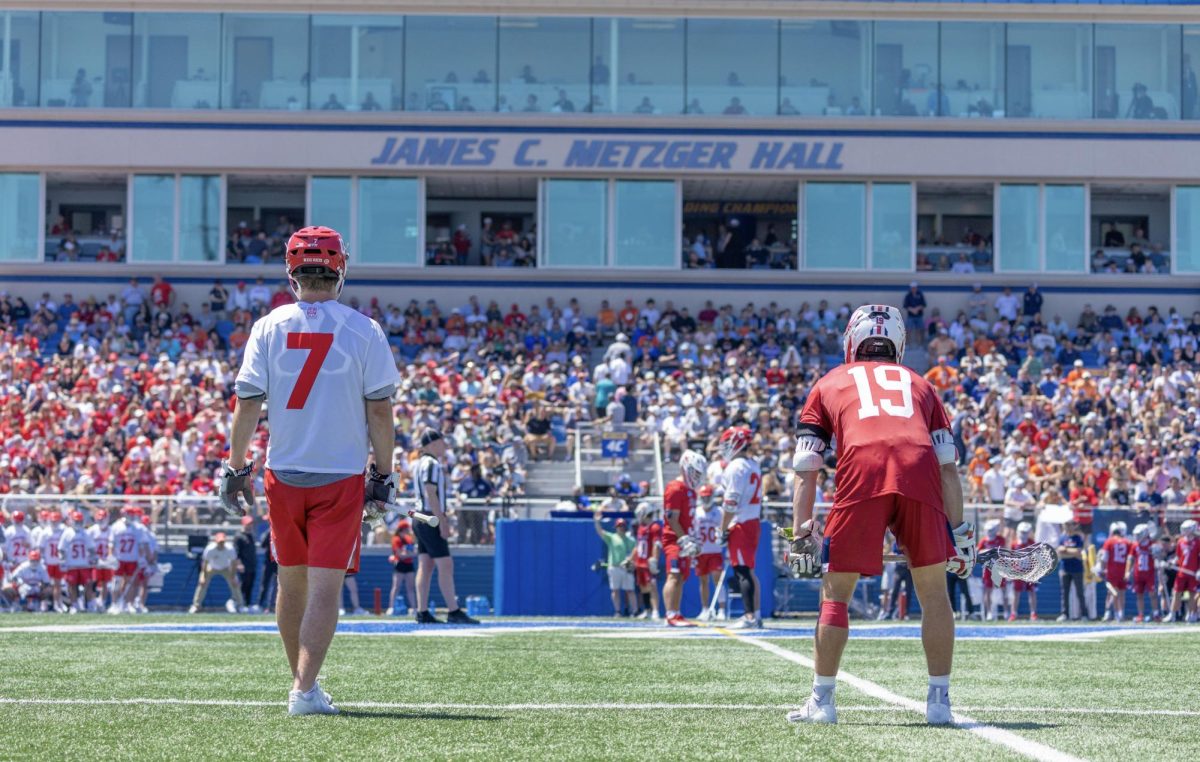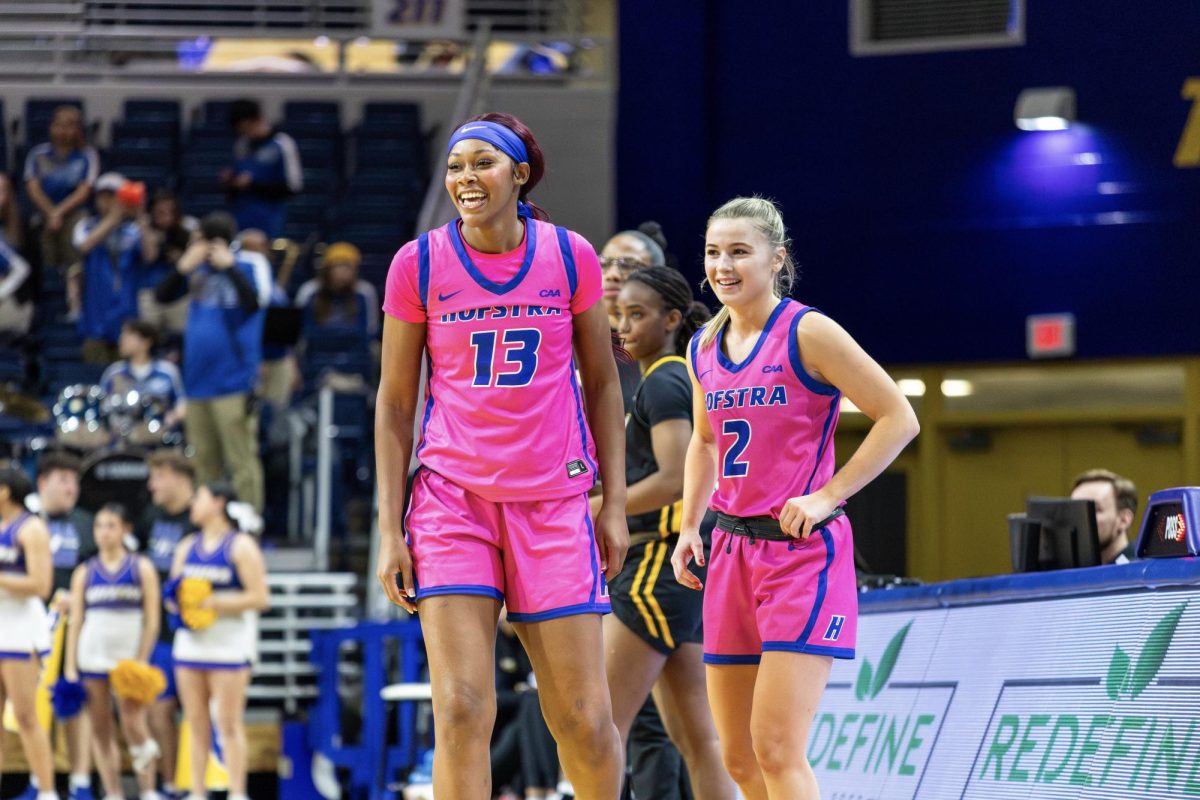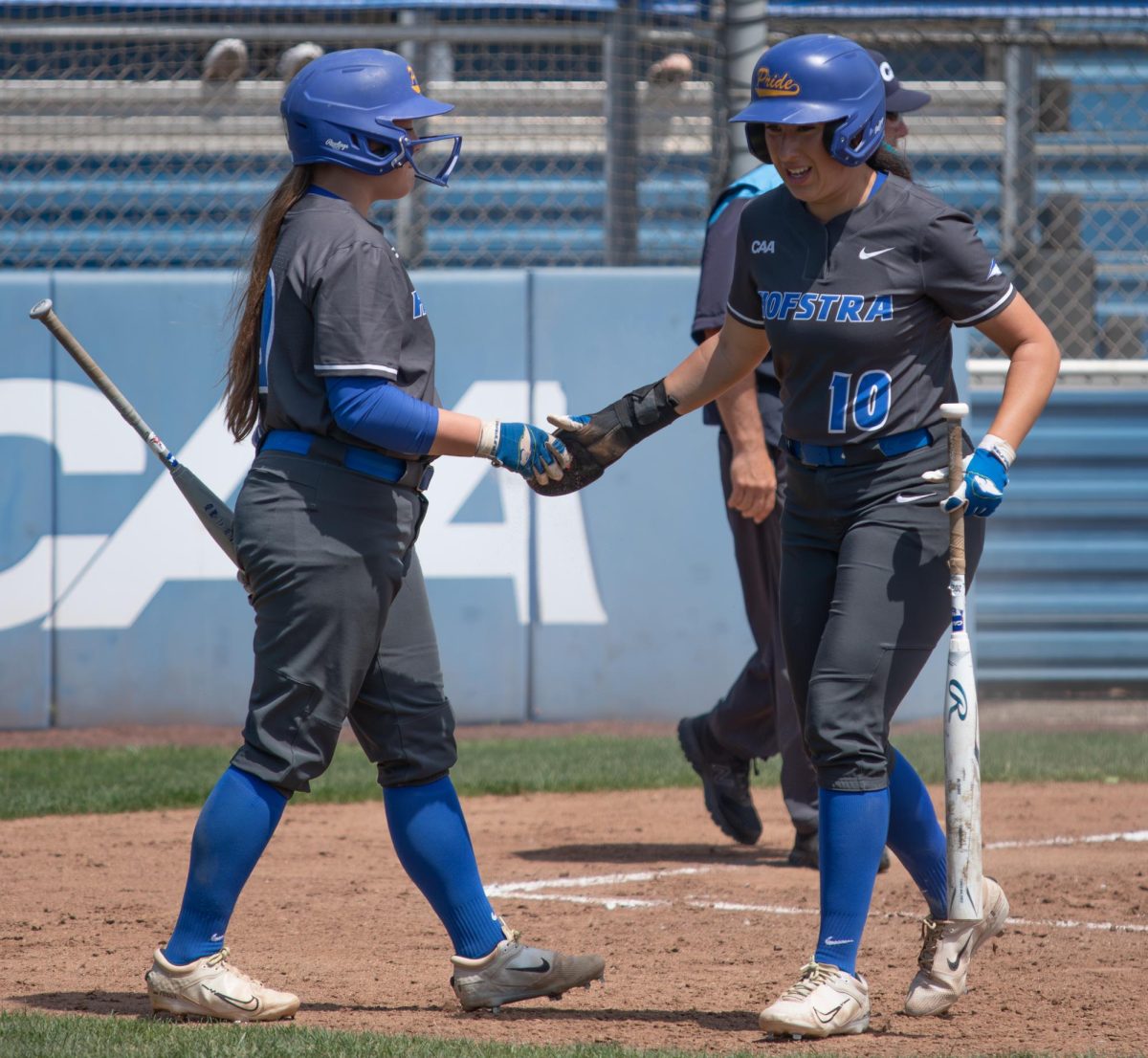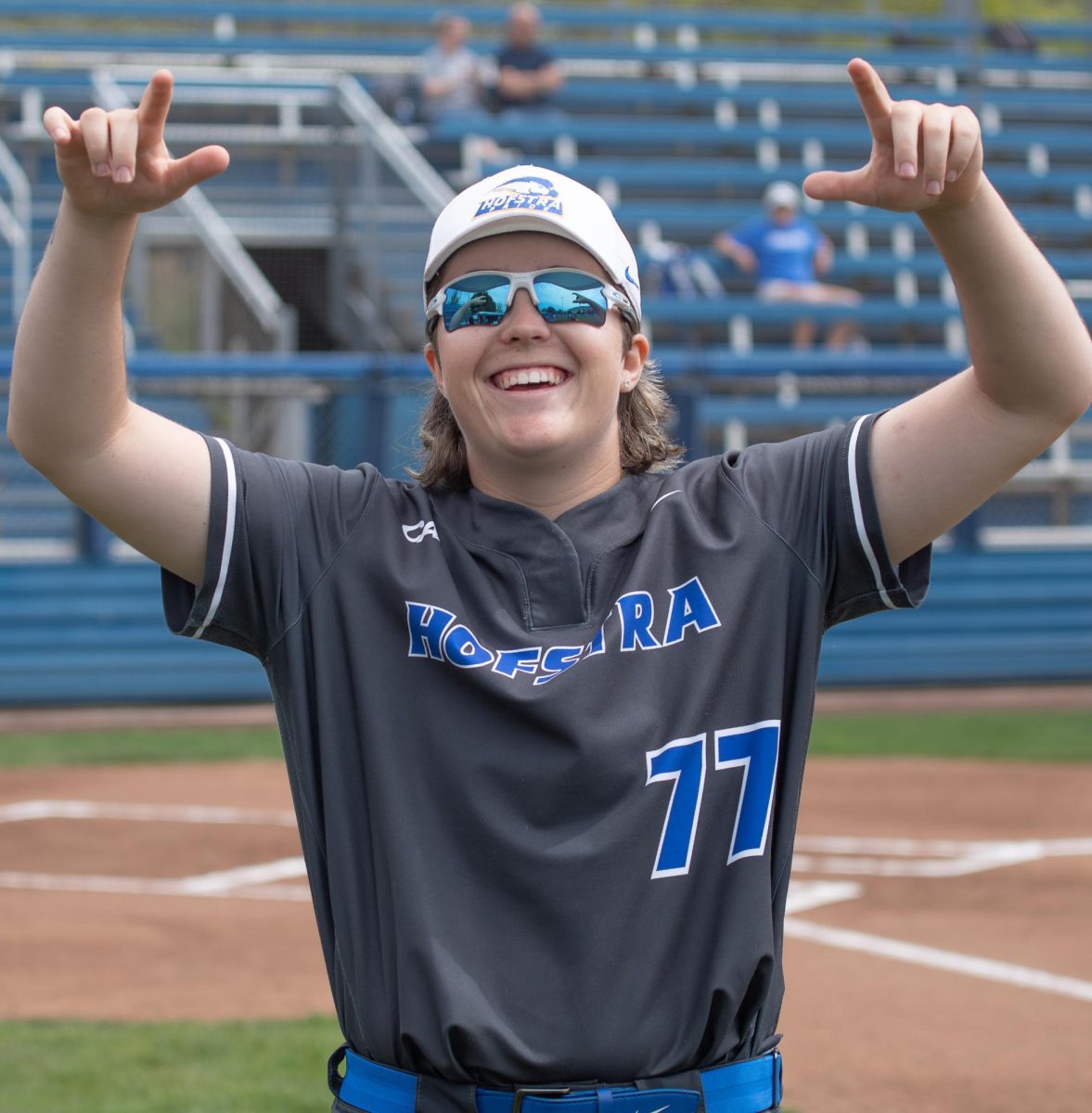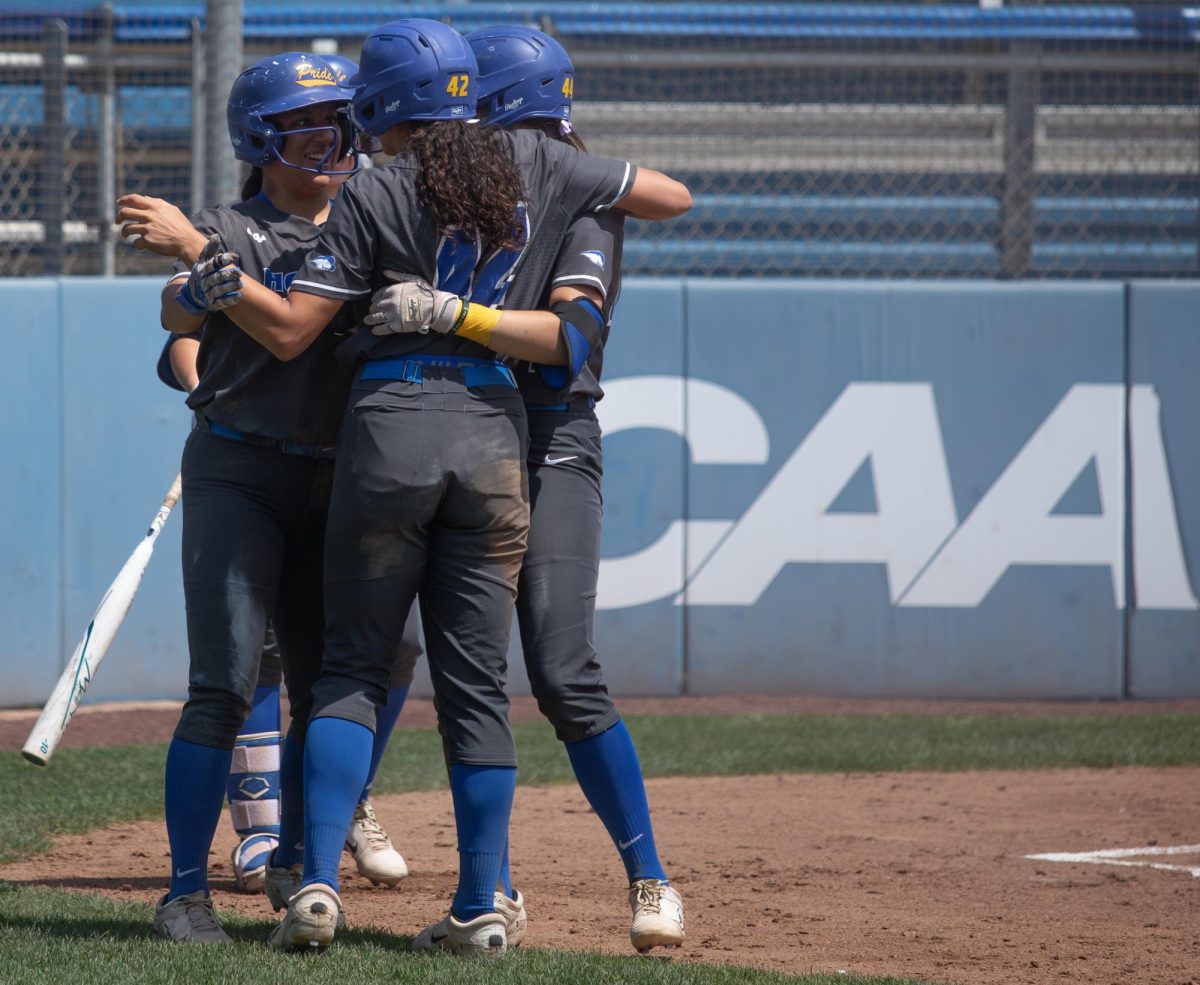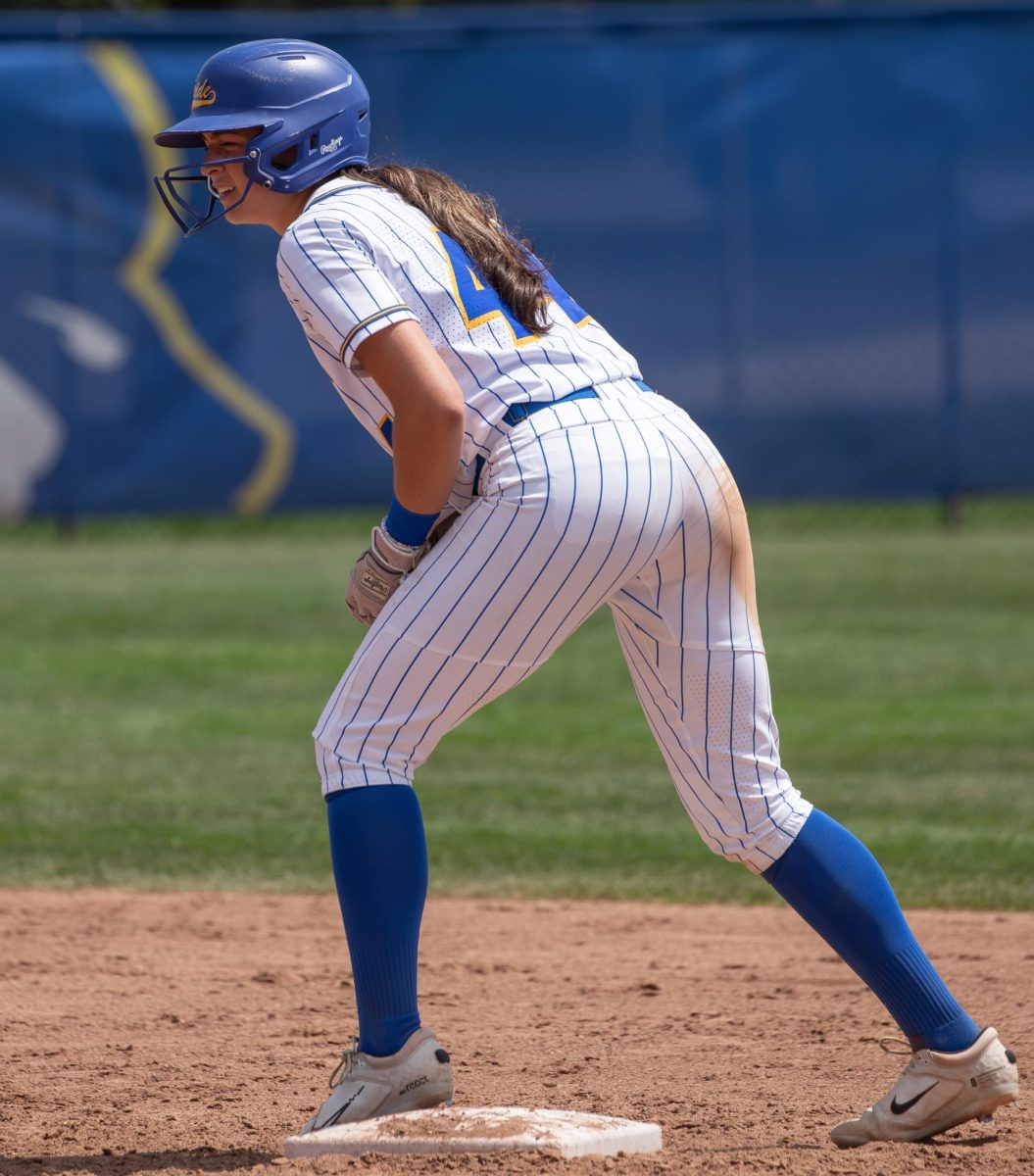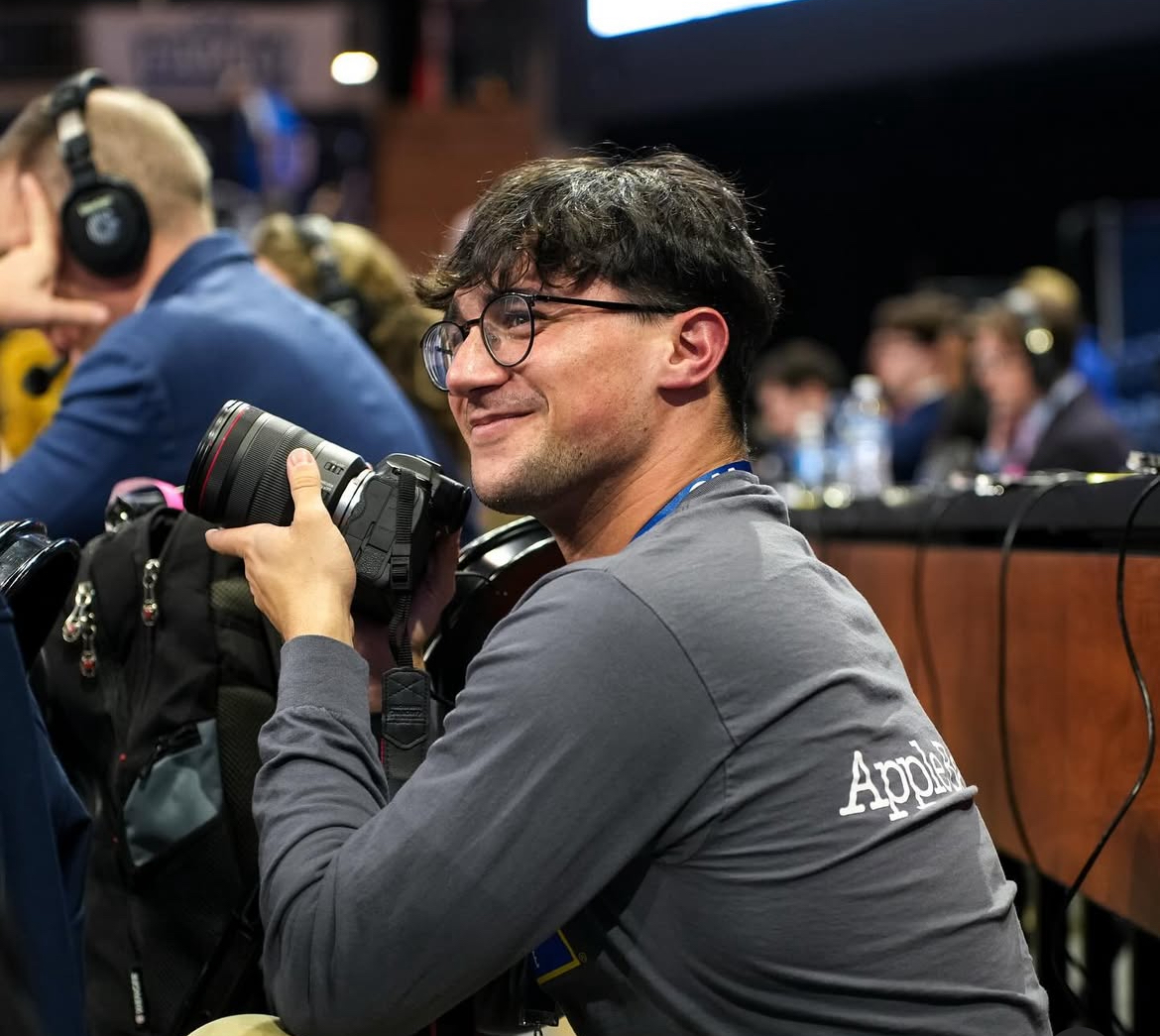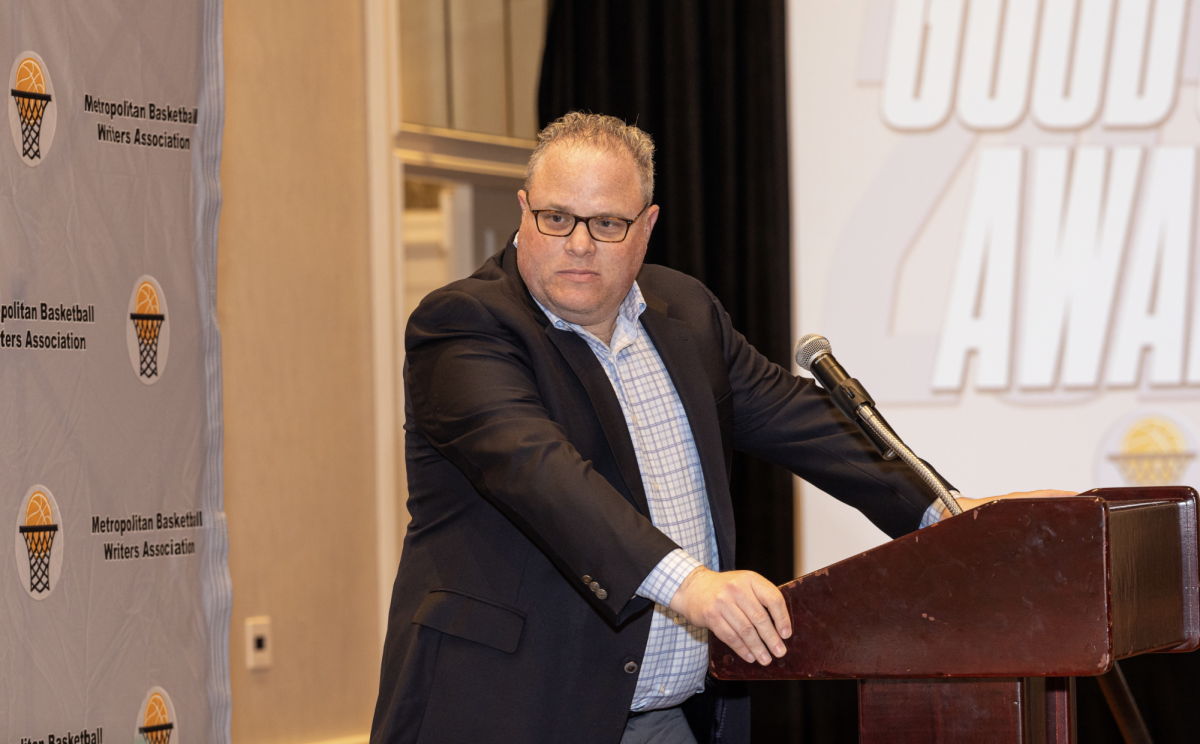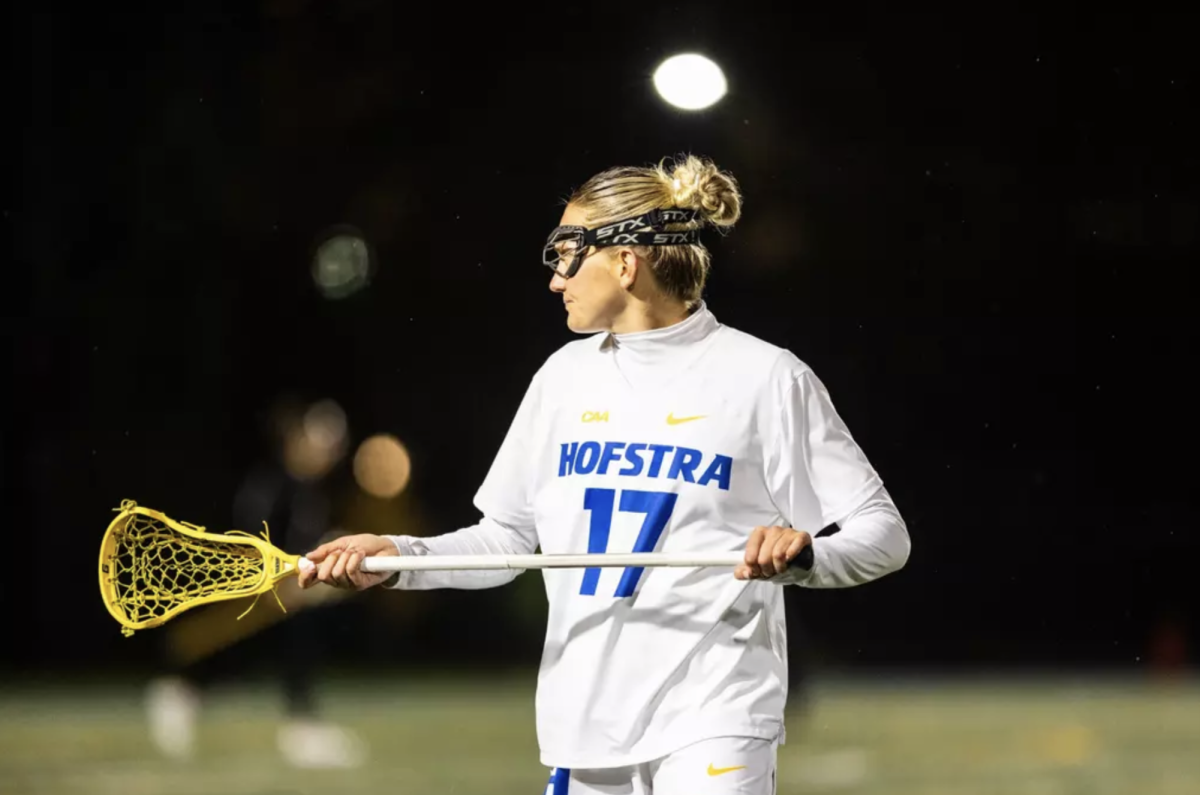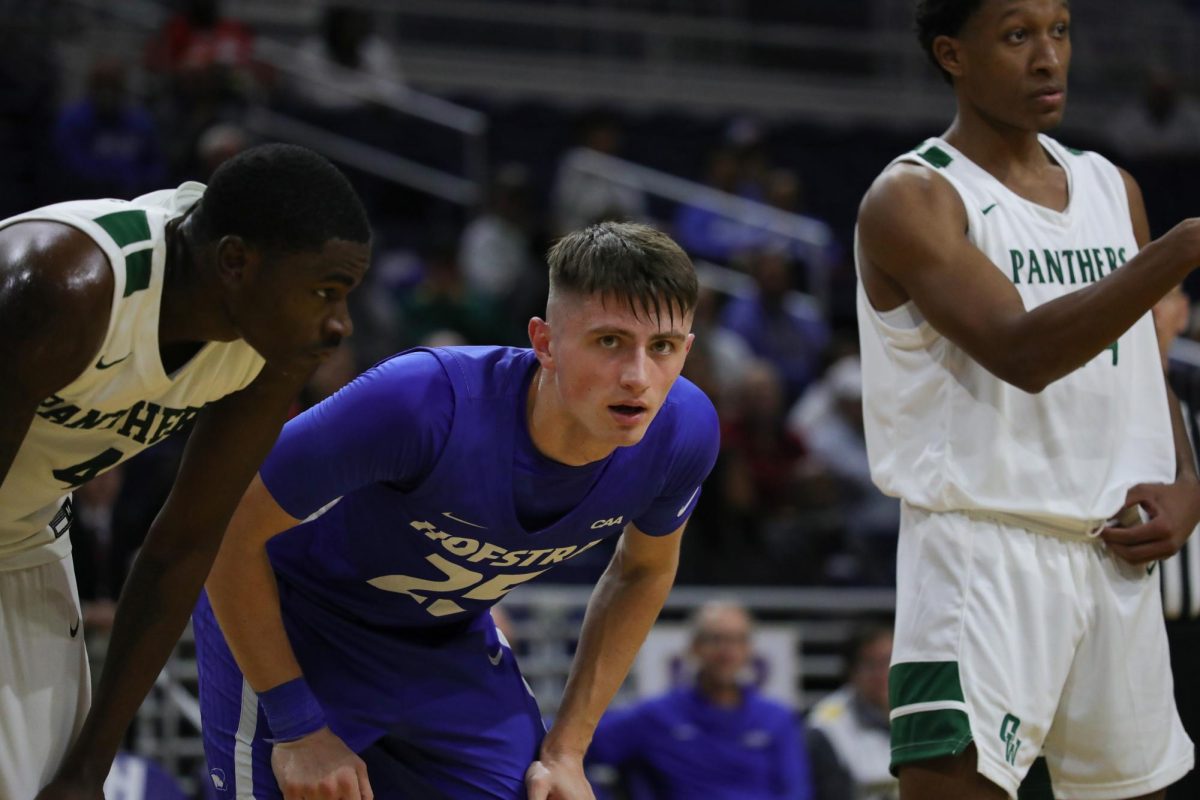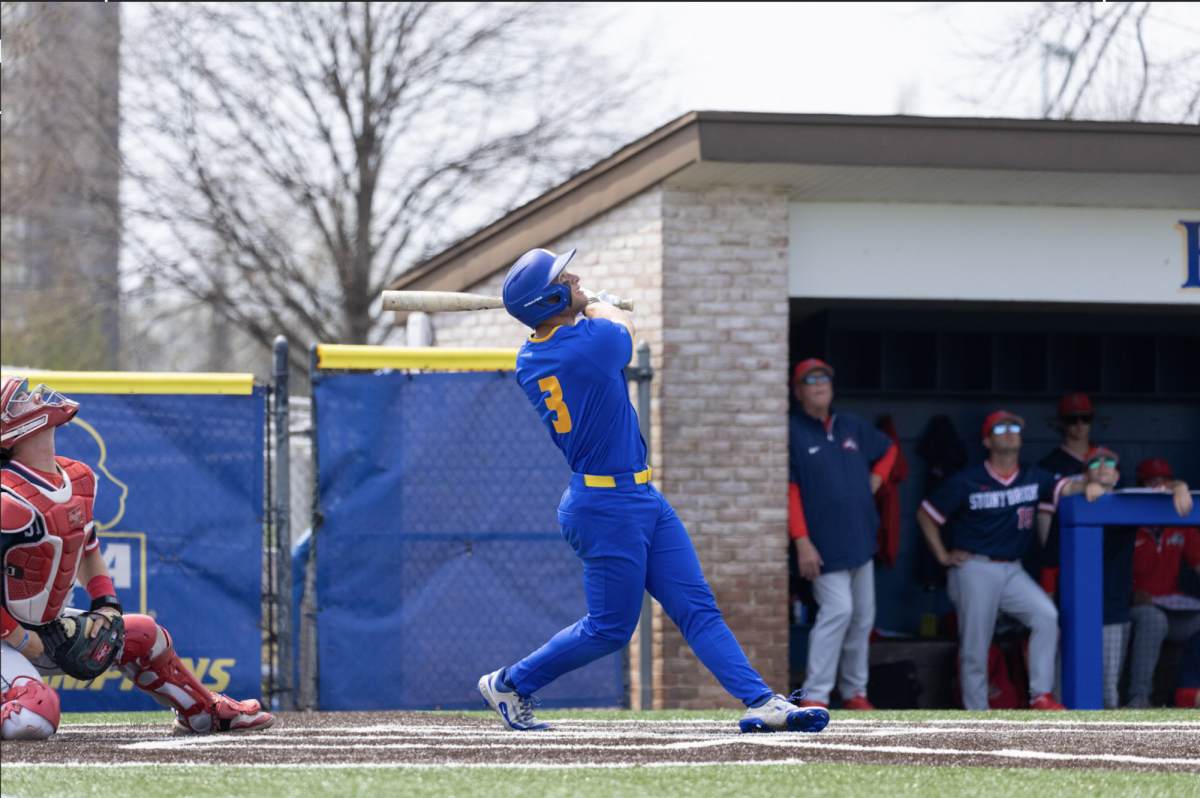The 2022 season for the Hofstra baseball team has been one filled with changes. There’s a brand-new coaching staff and a new collection of players that have given the Pride their best start to a season in a decade. The changes, however, aren’t limited to the team’s personnel. Hofstra is using a new piece of equipment in 2022 – one that has changed how the Pride’s pitching coach, Chris Rojas, and its catchers, Kevin Bruggeman and Nick Marrero, call pitches. An aspect of the game that has been a part of baseball for as long as the sport has been around itself.
Traditionally, pitches are called through intricate signals passed from a coach in the dugout to the catcher behind home plate to the pitcher on the mound. Recently though, that tradition has become more and more archaic. To modernize the sport, the NCAA Playing Rules Oversight Panel permitted schools to use electronic pitch calling systems at the outset of the 2022 season after having such systems used on an experimental basis for the last four years.
“To permit the use of an exclusively one-way electronic communication device from the dugout to the field for the purpose of relaying the pitch or play call is intended to provide teams with the ability to relay the pitch or play call to the field in a discrete and efficient manner to improve the pace of the game and maintain the integrity of a team’s signs,” reads Rule 5, Section 4, Article E of the NCAA’s Approved Rule Changes for 2021-22.
“Once the NCAA allowed the system to be used and added it to the rulebook, it then becomes permissible for all schools to follow the guidelines,” said Colonial Athletic Association (CAA) associate commissioner Rob Washburn. “The CAA made the decision to allow each school to use its own discretion whether to implement the system.”
The new electronic system available to CAA schools is not an overly complicated one. Rather than playing a brief round of confidential charades before each pitch, the coach is now equipped with a radio that is connected to a receiver worn by the catcher, who has an earpiece. The coach radios the pitch call to the catcher, who then puts down the corresponding sign to the pitcher, signaling what pitch should be thrown.
“I think it’s made [the pitchers and catchers’] lives easier not having to follow a sign system,” Rojas said. “ It takes a lot of the guesswork out of the equation. There’s no confusion.”
Before Hofstra’s coaches decided whether the Pride would use the new electronic pitch calling system this season, they first had to see if it actually worked and how the team’s catchers adjusted to it.
“We had to test it out first to make sure that it was game ready,” Rojas said. “Sometimes we’ll get a little interference from the neighboring security or facilities, but those are things you just hash through.”
For catchers Bruggeman and Marrero, the new system came easy and has made their jobs easier from behind home plate.
“It’s pretty simple and easy,” Bruggeman said. “Coach Rojas just says the pitch in your ear, and you go from there. You don’t have to look over to him as much. It’s pretty nice.”
“It really wasn’t an adjustment, honestly,” Marrero said. “It’s super easy. The only thing is making sure that it’s on in between innings. It’s pretty much the same game, except you just have an earpiece in your head. You don’t have to look over for signs anymore either. You can be with your pitcher one-on-one. It’s super simple.”
Not only has the new communication system made their jobs easier, but with the new technology, Hofstra’s catchers have the ability to call the game from behind home plate in a way they have never done before.
“Coach Rojas can come over the earpiece and say, ‘I want a fastball away, but I want it off the plate,’” Marrero said. “That tells me he doesn’t want that pitch for a strike. He wants the batter to chase it. If we’re using the old system, we don’t really know that. We have to base it on our own knowledge. Now, we can be more specific.”
The specification that comes with the new electronic system has also helped cut down on instances where pitchers and catchers aren’t on the same page as to what the pitch is being thrown, otherwise known as being “crossed-up.” Oftentimes, when a pitcher and catcher are crossed-up, it leads to costly mistakes in games.
“Getting crossed up is never fun. It happens, but now I think with the earpiece, it’ll be better,” Marrero said. “As a catcher, you’re not seeing the wrong number and then going onto the card and picking the wrong number and calling the wrong pitch because Coach Rojas is right in your ear and telling you what to call.”
The rule change made by the NCAA marked the first time that such technology is permitted for use in baseball on a non-trial basis at any level. Baseball players, coaches, fans and decision-makers had played catch with the idea of introducing technology into a game that conjures up memories of a simpler time. Some traditionalists have argued that the introduction of technology into baseball has taken away from the human element at the heart of the game, a point that Rojas acknowledges.
“The romanticization of baseball is an element that has been taken away with technology,” Rojas said. “Especially with bigger programs that are using wristbands and everybody on the field has one. There’s no ability to use signs.”
Major League Baseball has also permitted the use of electronic pitch calling systems in its games this year. Of course, some have drawn a link between the new systems and the cheating scandal surrounding the Houston Astros, who electronically stole signs from their opponents for the better part of three seasons and won the World Series in 2017 while doing so. Regardless, there are those who do not believe that the introduction of technology detracts from the original essence of the game.
“I don’t think it has changed the dynamic of anything at all,” Marrero said. “Pitch calling is going to be pitch calling as it is. I think, if anything, we can do more of what the coaches are telling us to do, and it’s not really in code.”
It’s a sign of the times. For years, other major sports have slowly introduced the use of more and more technology in their rules, while baseball has stubbornly stayed put. Some believe that technology in baseball is long overdue and is a part of the game’s natural evolution.
“Baseball is changing, and you have to accept that fact,” Bruggeman said. “All this technology is making it better. All sports are growing with technology, and it’s going to keep molding into sports as we go on.”
As more technology is made a part of baseball, which is likely to happen in the coming year
s, it’s important to note that such progression isn’t a bad thing. At its core, baseball is a game based on the human spirit – a game that can’t be won or lost with a walkie-talkie.
“The irony about pitch calling is that there’s no mandate,” Rojas said. “We’re going off of information based on what we know and we send it out to the catcher, but at the end of the day, the pitcher decides what he wants to throw. The pitcher has to be confident in executing whatever pitch selection is for them at that point in time. It’s still baseball, just without the ability to go ahead and decipher what the other team is doing. Now, I guess you can say that you really need to be tuned into the matchup. It’s still baseball. You still have to hit and execute. You still have to make pitches and get your job done.”
Photo courtesy of Hofstra Athletics

